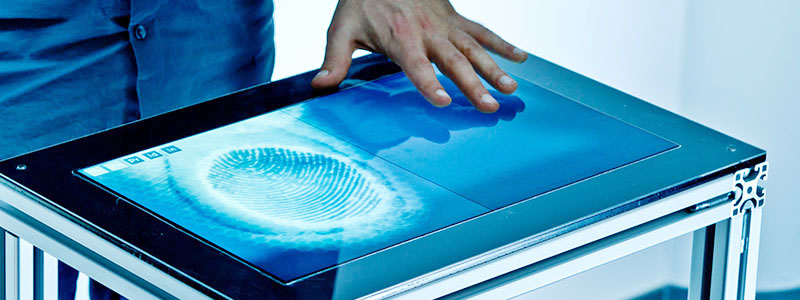
Fiberio: A Touchscreen that Senses Fingerprints
Christian Holz and Patrick Baudisch. UIST 2013. Best paper award.
Hasso Plattner Institute, Potsdam, Germany.
Video
Figure 1
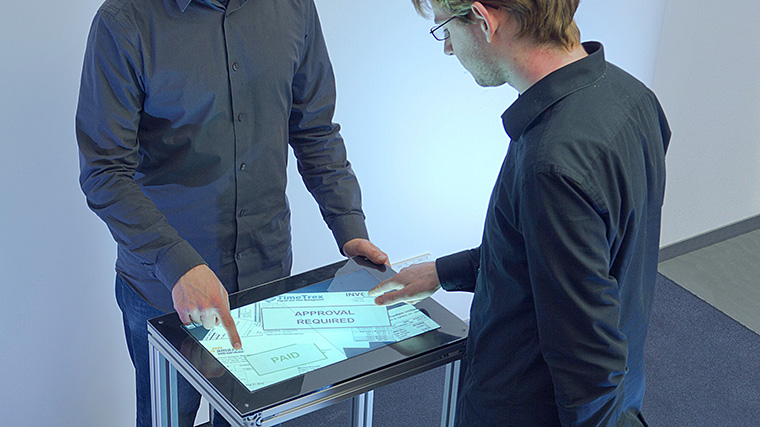
Fiberio is a rear-projected tabletop system that identifies users based on their fingerprints during each interaction—unobtrusively and securely. The shown application uses this to verify that the respective user has the authority to perform the current activity, here approve invoices above a certain value. The key that allows Fiberio to display an image and sense fingerprints at the same time is its screen material: a fiber optic plate.
Abstract
We present Fiberio, a rear-projected multitouch table that identifies users biometrically based on their fingerprints during each touch interaction. Fiberio accomplishes this using a new type of screen material: a large fiber optic plate. The plate diffuses light on transmission, thereby allowing it to act as projection surface. At the same time, the plate reflects light specularly, which produces the contrast required for fingerprint sensing. In addition to offering all the functionality known from traditional diffused illumination systems, Fiberio is the first interactive tabletop system that authenticates users during touch interaction—unobtrusively and securely using the biometric features of fingerprints, which frees users from carrying identification tokens.
Publication
Other figures
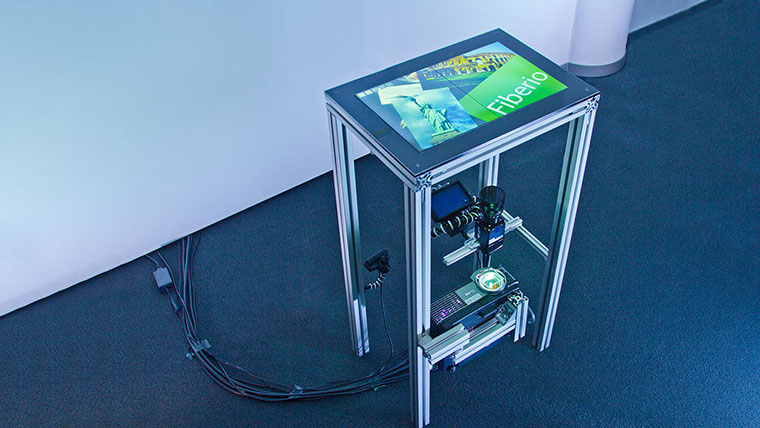
Fiberio uses a standard diffuse illumination setup, comprising a high-resolution camera, a projector, an illuminant. The screen ("diffuser"), however, is a fiber optic plate, which uniquely enables displaying output as well as scanning fingerprints.
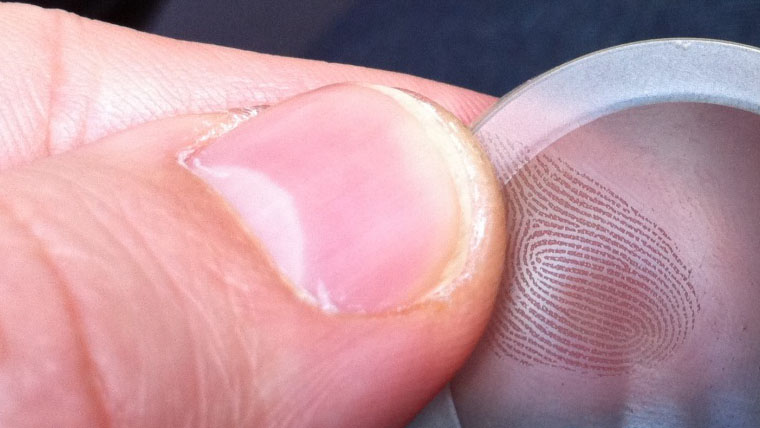
The Fiber optic plate reveals the user's fingerprint upon touching the surface. The fingerprint ridges in contact with the surface appear dark, whereas fingerprint valleys and hovering parts of the finger appear brighter.

Example scenario: A bank manager and clerk approve invoices. (left) When the clerk encounters a bill above his approval limit, Fiberio refuses the payment. (right) The manager completes the transaction, pushing the same button.
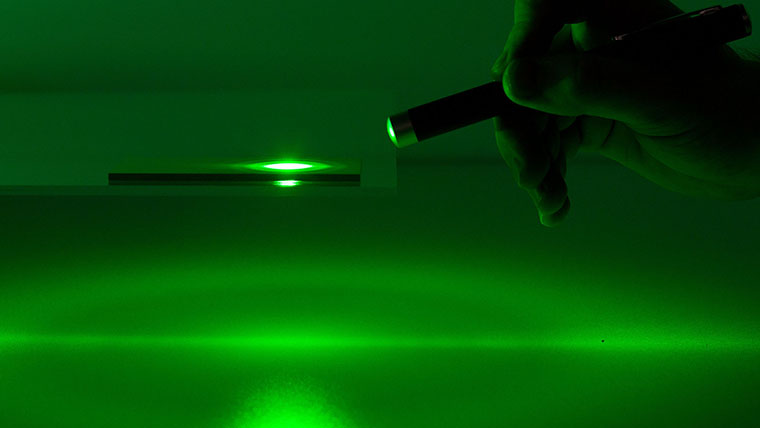
Fiberio uses a fiber plate as the screen, which consists of a multitude of very small-diameter glass fibers (6μm). The fiber optic plate blurs all incident light, here exemplified using a dot laser pointer. The fact that the fiber optic plate scatters light into all directions is the basis for a good light diffuser, which is necessary for projecting output on the touchscreen.
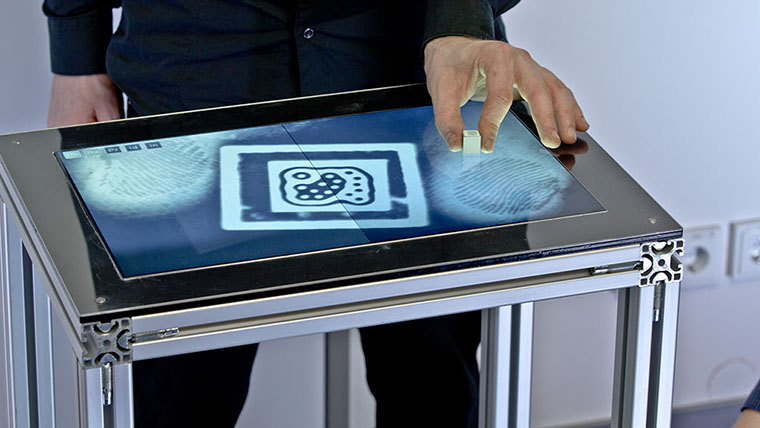
Fiberio recognizes touch, but also hovering objects, such as the user's fingers. Fiberio also recognizes fiducial markers that are attached to tangible objects. The marker attached to the shown cube measures only 3mm×3mm.
